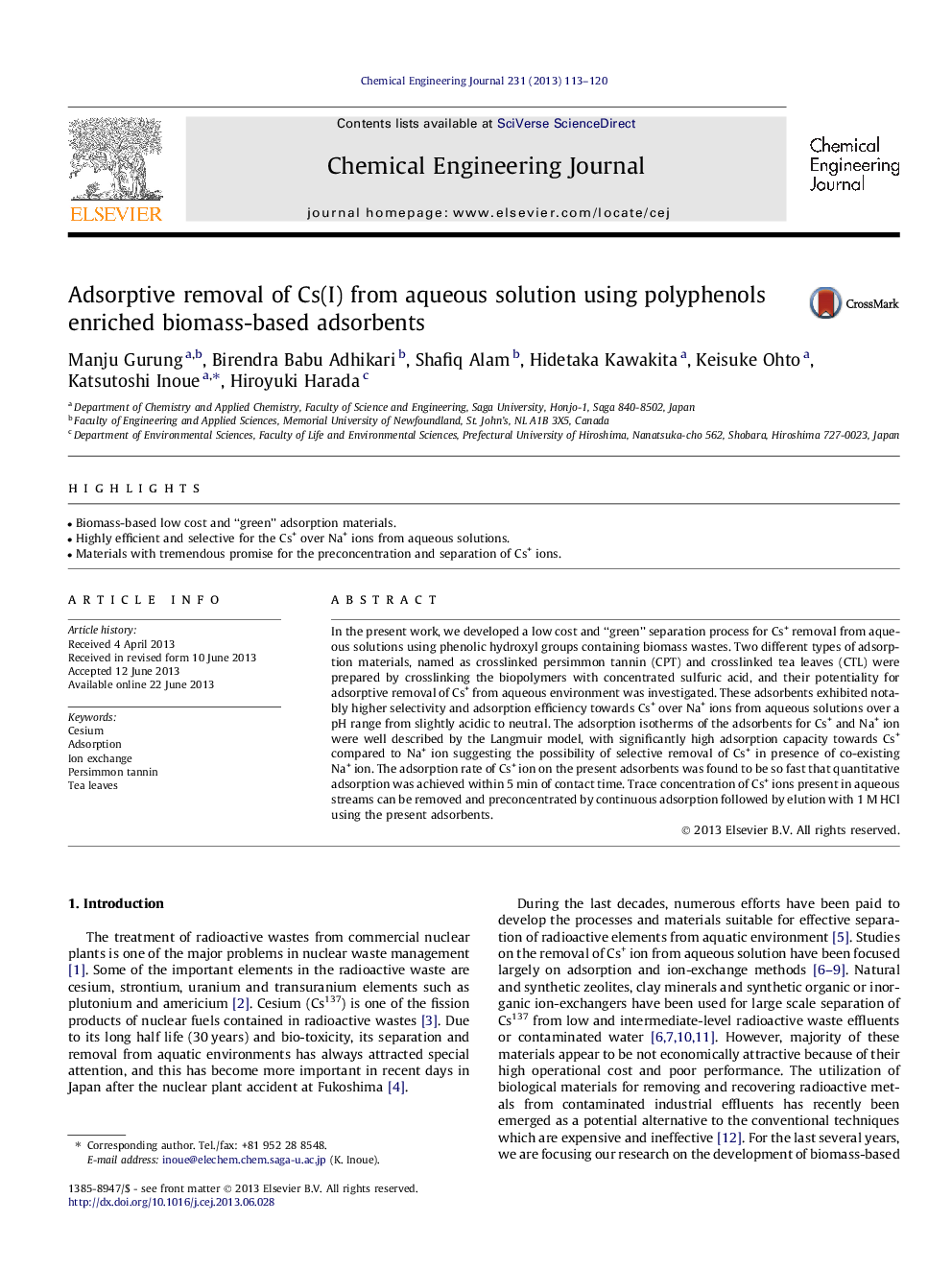| کد مقاله | کد نشریه | سال انتشار | مقاله انگلیسی | نسخه تمام متن |
|---|---|---|---|---|
| 148258 | 456408 | 2013 | 8 صفحه PDF | دانلود رایگان |

• Biomass-based low cost and “green” adsorption materials.
• Highly efficient and selective for the Cs+ over Na+ ions from aqueous solutions.
• Materials with tremendous promise for the preconcentration and separation of Cs+ ions.
In the present work, we developed a low cost and “green” separation process for Cs+ removal from aqueous solutions using phenolic hydroxyl groups containing biomass wastes. Two different types of adsorption materials, named as crosslinked persimmon tannin (CPT) and crosslinked tea leaves (CTL) were prepared by crosslinking the biopolymers with concentrated sulfuric acid, and their potentiality for adsorptive removal of Cs+ from aqueous environment was investigated. These adsorbents exhibited notably higher selectivity and adsorption efficiency towards Cs+ over Na+ ions from aqueous solutions over a pH range from slightly acidic to neutral. The adsorption isotherms of the adsorbents for Cs+ and Na+ ion were well described by the Langmuir model, with significantly high adsorption capacity towards Cs+ compared to Na+ ion suggesting the possibility of selective removal of Cs+ in presence of co-existing Na+ ion. The adsorption rate of Cs+ ion on the present adsorbents was found to be so fast that quantitative adsorption was achieved within 5 min of contact time. Trace concentration of Cs+ ions present in aqueous streams can be removed and preconcentrated by continuous adsorption followed by elution with 1 M HCl using the present adsorbents.
Journal: Chemical Engineering Journal - Volume 231, September 2013, Pages 113–120